Dell Inspiron 13 7391 2-in-1 review – this thing will easily last you through the day on battery power
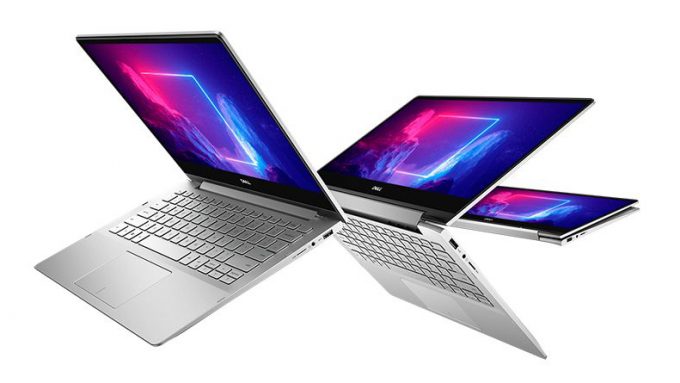 For 2019/2020, Dell has completely redesigned its Inspiron 13 7000 2-in-1 model. Gone are the black keys on a silver deck, and while the fingerprint reader remains embedded into the power button, it is now rectangular, rather than circular, and it sits on the same row as the function keys.
For 2019/2020, Dell has completely redesigned its Inspiron 13 7000 2-in-1 model. Gone are the black keys on a silver deck, and while the fingerprint reader remains embedded into the power button, it is now rectangular, rather than circular, and it sits on the same row as the function keys.
What else is new about this device? Well, the hinge is now one component, that offers some leverage when you open the notebook in an upright position. Other than that, there is a stylus included inside the box, which may or may not be optional, depending on your region.
On the hardware part, the new boy comes with the 10th Generation Comet Lake processors, which include the Core i5-10210U and the Core i7-10510U. To be honest, they don’t offer much performance improvement over the Whiskey Lake chaps, but the improved 14nm process should provide a better battery life, thanks to its optimization.
You can check the prices and configurations in our Specs System: https://laptopmedia.com/series/dell-inspiron-13-7391-2-in-1/
Contents
Specs Sheet
- HDD/SSD
- up to 2000GB SSD + up to 1000GB HDD
- RAM
- up to 32GB
- OS
- Windows 10 Home, Windows 10 Pro
- Battery
- 52Wh, 4-cell, 45Wh, 4-cell, 42Wh, 3-cell, 4-cell
- Dimensions
- 306.7 x 215.9 x 15.9 mm (12.07" x 8.50" x 0.63")
- Weight
- 1.45 kg (3.2 lbs)
- Ports and connectivity
- 1x USB Type-A
- 3.2 Gen 1 (5 Gbps)
- 1x USB Type-C
- 3.2 Gen 2 (10 Gbps), Thunderbolt 3, Power Delivery (PD), DisplayPort
- HDMI
- 2.0
- Card reader
- microSD (SD/SDHC/SDXC)
- Wi-Fi
- 802.11a/b/g/n/ac/ax
- Bluetooth
- 5.0
- Audio jack
- 3.5 mm combo
- Features
- Fingerprint reader
- optional
- Web camera
- HD
- Backlit keyboard
- Microphone
- Digital Array Microphones
- Speakers
- 2x 2W, Stereo Speakers
- Optical drive
- Security Lock slot
All Dell Inspiron 13 7391 2-in-1 configurations
What’s in the box?
Apart from the laptop and the dedicated stylus we mentioned, there is a 65W power adapter inside the packaging.
Design and construction
As we mentioned the new Inspiron 13 7391 2-in-1 features a brand new design. It now looks more up to date with the trends. What remains, however, is the aluminum chassis, which gives the notebook rigidity. Further down into the review, you are going to see that a honeycomb structure beneath the palm-rest area is giving the surface extra strength when you push it down or try to twist it. Nevertheless, the laptop now weighs 1.45 kg – 50 grams more than its predecessor, while its height goes from 13.66mm at its thinnest spot to 15.9mm at its thickest.
Traditionally, 2-in-1’s lids tend to be impossible to open with a single hand. This is exactly the case here, as well. Interestingly, the hinge now comprises an elongated part that turns with the display. Even more interesting is the fact that it uses a leverage mechanism, similar to the ErgoLift of ASUS, and the one we showed you on HP Pavilion 15 (15-cs3000).
Now let’s talk about the keyboard. As we mentioned, Dell no longer uses the black colored keycaps, but rather paints them the same color as the base. Additionally, it has a backlight and the keycap size is pretty big. We are also happy with the amount of key travel it offers, however, some keys appear to be mushier than other – it is a bit odd, but this is not as frustrating as the Page Up and Down keys, which are placed right above the left and right arrow keys.
In the top right corner of the keyboard, you can see the power button, which doubles as a fingerprint reader. Similarly to last year – it is blazingly quick to detect your fingerprints. Then, the touchpad – neither it is big, nor too small, nor it is the best in terms of tracking. On the bright side, it is made out of glass, which gives the users a good gliding experience.
After we turn the notebook upside down, we can see that the speaker cut-outs have become drastically bigger, while the air intake is relatively the same as with its predecessor. Hot air, however, is now targeted towards the hinge cover, which ruins the clearance for the air, and potentially limits the airflow, especially at higher fan RPMs.
Ports
While the I/O is limited, compared to some larger siblings, there are some surprises. On the left, you will find the power plug, as well as an HDMI 2.0 connector and a Thunderbolt 3 port. Then, on the right, there is a USB Type-A 3.1 (Gen. 1) port, a headphone jack, and a microSD card reader.
Disassembly, upgrade options and maintenance
Getting inside of this device is made extremely easy by attaching the bottom panel with only 7 Phillips-head screws. After you unscrew them, remove the panel with the help of a plastic pry tool. Don’t be afraid to use some force, this sucker is tough.
In terms of cooling, there is a single heat pipe (that is pretty bulky). It takes the heat away from the processor and delivers it to the heat sink, which then dissipates it with the help of a medium-sized fan.
Sadly, all of the memory of this notebook is soldered to its motherboard. On the bright side, you can pop up to 1TB of PCIe x4 NVMe SSD in its M.2 slot. In addition to M.2 2280 drives, the notebook supports M.2 2230 drives, thanks to the weird T-shaped bracket you can see on the image below.
Lastly, there is a 45Wh battery pack that powers the 13-inch notebook, when it’s off the grid.
Display quality
Dell Inspiron 13 7391 2-in-1 is equipped with a Full HD IPS panel, Innolux N133HCE-EPA (CMN1384). Its diagonal is 13.3-inch (33.78 cm), and the resolution – 1920 х 1080p. Additionally, the screen ratio is 16:9, the pixel density – 166 ppi, their pitch – 0.153 х 0.153 mm. The screen can be considered Retina when viewed from at least 53 cm (from this distance, the average human eye can’t see the individual pixels).

Viewing angles are excellent on this screen. We offer images at different angles to evaluate the quality.

The maximum measured brightness is 235 nits (cd/m2) in the middle of the screen and 223 nits (cd/m2) average across the surface with a maximum deviation of 7%. The Correlated Color Temperature on a white screen and at maximum brightness is 6890K – slightly colder than the 6500K standard temperature for sRGB. The average color temperature through the grey scale before profiling is 6810K.
In the illustration below you can see how the display performs from uniformity perspective. The illustration below shows how matters are for operational brightness levels (approximately 140 nits) – in this particular case at 60% Brightness (White level = 143 cd/m2, Black level = 0.12 cd/m2).
Values of dE2000 over 4.0 should not occur, and this parameter is one of the first you should check if you intend to use the laptop for color-sensitive work (a maximum tolerance of 2.0 ). The contrast ratio is excellent – 1180:1 (1030:1 after profiling).

To make sure we are on the same page, we would like to give you a little introduction to the sRGB color gamut and the Adobe RGB. To start, there’s the CIE 1976 Uniform Chromaticity Diagram that represents the visible specter of colors by the human eye, giving you a better perception of the color gamut coverage and the color accuracy.
Inside the black triangle, you will see the standard color gamut (sRGB) that is being used by millions of people in HDTV and on the web. As for the Adobe RGB, this is used in professional cameras, monitors, etc for printing. Basically, colors inside the black triangle are used by everyone and this is the essential part of the color quality and color accuracy of a mainstream notebook.
Still, we’ve included other color spaces like the famous DCI-P3 standard used by movie studios, as well as the digital UHD Rec.2020 standard. Rec.2020, however, is still a thing of the future and it’s difficult for today’s displays to cover that well. We’ve also included the so-called Michael Pointer gamut, or Pointer’s gamut, which represents the colors that naturally occur around us every day.
The yellow dotted line shows Dell Inspiron 13 7391 2-in-1’s color gamut coverage.
Its display covers 52% of the sRGB/ITU-R BT.709 (web/HDTV standard) in CIE1976.

Our “Design and Gaming” profile delivers optimal color temperature (6500K) at 140 cd/m2 luminance and sRGB gamma mode.
We tested the accuracy of the display with 24 commonly used colors like light and dark human skin, blue sky, green grass, orange, etc. You can check out the results at factory condition and also, with the “Design and Gaming” profile.
Below you can compare the scores of Dell Inspiron 13 7391 2-in-1 with the default settings (left), and with the “Gaming and Web design” profile (right).


The next figure shows how well the display is able to reproduce really dark parts of an image, which is essential when watching movies or playing games in low ambient light.
The left side of the image represents the display with stock settings, while the right one is with the “Gaming and Web Design” profile activated. On the horizontal axis, you will find the grayscale and on the vertical axis – the luminance of the display. On the two graphs below you can easily check for yourself how your display handles the darkest nuances but keep in mind that this also depends on the settings of your current display, the calibration, the viewing angle, and the surrounding light conditions.

Response time (Gaming capabilities)
We test the reaction time of the pixels with the usual “black-to-white” and “white-to-black” method from 10% to 90% and vice versa.
We recorded Fall Time + Rise Time = 29 ms.

Health impact – PWM / Blue Light
PWM (Screen flickering)
Pulse-width modulation (PWM) is an easy way to control monitor brightness. When you lower the brightness, the light intensity of the backlight is not lowered, but instead turned off and on by the electronics with a frequency indistinguishable to the human eye. In these light impulses, the light/no-light time ratio varies, while brightness remains unchanged, which is harmful to your eyes. You can read more about that in our dedicated article on PWM.
Dell Inspiron 13 7391 2-in-1’s display uses PWM to adjust its brightness until 60 nits. Thankfully, the flickerings have a high frequency and are not harmful in this aspect.

Blue light emissions
Installing our Health-Guard profile not only eliminates PWM but also reduces the harmful Blue Light emissions while keeping the colors of the screen perceptually accurate. If you’re not familiar with the Blue light, the TL;DR version is – emissions that negatively affect your eyes, skin and your whole body. You can find more information about that in our dedicated article on Blue Light.
Conclusion
Dell Inspiron 13 7391 2-in-1’s display has an IPS touchscreen panel with a Full HD resolution, comfortable viewing angles, good contrast ratio, and adequate default settings. Moreover, it doesn’t use PWM for brightness adjustment. On the downside, there is only the poor color coverage of 52% of sRGB.
Buy our profiles
Since our profiles are tailored for each individual display model, this article and its respective profile package are meant for Dell Inspiron 13 7391 2-in-1 configurations with 13.3″ Innolux N133HCE-EPA (CMN1384) (FHD, 1920 × 1080) IPS panel.
*Should you have problems with downloading the purchased file, try using a different browser to open the link you’ll receive via e-mail. If the download target is a .php file instead of an archive, change the file extension to .zip or contact us at [email protected].
Read more about the profiles HERE.
In addition to receiving efficient and health-friendly profiles, by buying LaptopMedia's products you also support the development of our labs, where we test devices in order to produce the most objective reviews possible.

Office Work
Office Work should be used mostly by users who spend most of the time looking at pieces of text, tables or just surfing. This profile aims to deliver better distinctness and clarity by keeping a flat gamma curve (2.20), native color temperature and perceptually accurate colors.

Design and Gaming
This profile is aimed at designers who work with colors professionally, and for games and movies as well. Design and Gaming takes display panels to their limits, making them as accurate as possible in the sRGB IEC61966-2-1 standard for Web and HDTV, at white point D65.

Health-Guard
Health-Guard eliminates the harmful Pulse-Width Modulation (PWM) and reduces the negative Blue Light which affects our eyes and body. Since it’s custom tailored for every panel, it manages to keep the colors perceptually accurate. Health-Guard simulates paper so the pressure on the eyes is greatly reduced.
Get all 3 profiles with 33% discount
Sound
Dell Inspiron 13 7391 2-in-1’s speakers produce decent sound quality. At maximum volume, there is some distortion, especially in the high end. On the bright side, low, mid and high tones are clear of deviations.

Drivers
You can find all of the drivers and utilities for the Inspiron 13 7391 2-in-1 here: dell.com/support/home/us/en/19/product-support/product/inspiron-13-7391-2-in-1-laptop/drivers
Battery
Now, we conduct the battery tests with Windows Better performance setting turned on, screen brightness adjusted to 120 nits and all other programs turned off except for the one we are testing the notebook with. We shall see if a 45Wh battery is enough for this device.
In our tests, we were able to get 10 hours and a half of Web browsing and just 6 minutes short of ten hours of video playback.
In order to simulate real-life conditions, we used our own script for automatic web browsing through over 70 websites.
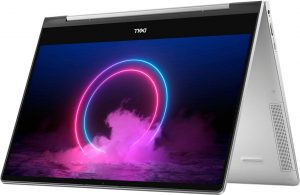
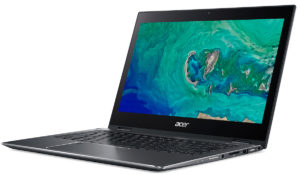
For every test like this, we use the same video in HD.


CPU options
As of the moment of writing this review, the Inspiron 13 7391 2-in-1 comes with Intel Core i5-10210U and the Core i7-10510U.
Results are from the Cinebench 20 CPU test (the higher the score, the better)
Results are from our Photoshop benchmark test (the lower the score, the better)
GPU options
On the graphics card side, there is nothing unexpected – you can only get the machine with the integrated Intel UHD Graphics.
Results are from the 3DMark: Time Spy (Graphics) benchmark (higher the score, the better)
Results are from the 3DMark: Fire Strike (Graphics) benchmark (higher the score, the better)
Results are from the Unigine Superposition benchmark (higher the score, the better)
Gaming tests

| CS:GO | HD 1080p, Low (Check settings) | HD 1080p, Medium (Check settings) | HD 1080p, MAX (Check settings) |
|---|---|---|---|
| Average FPS | 58 fps | 30 fps | – fps |

| DOTA 2 | HD 1080p, Low (Check settings) | HD 1080p, Normal (Check settings) | HD 1080p, High (Check settings) |
|---|---|---|---|
| Average FPS | 80 fps | 36 fps | – fps |
Temperatures and comfort
Max CPU load
In this test we use 100% on the CPU cores, monitoring their frequencies and chip temperature. The first column shows a computer’s reaction to a short load (2-10 seconds), the second column simulates a serious task (between 15 and 30 seconds), and the third column is a good indicator of how good the laptop is for long loads such as video rendering.
Average core frequency (base frequency + X); CPU temp.
| Intel Core i7-10510U (15W TDP) | 0:02 – 0:10 sec | 0:15 – 0:30 sec | 10:00 – 15:00 min |
|---|---|---|---|
| Dell Inspiron 13 7391 2-in-1 | 3.50 GHz (B+94%) @ 98°C | 2.27 GHz (B+26%) @ 82°C | 2.09 GHz (B+16%) @ 79°C |
| Dell XPS 13 7390 | 3.62 GHz (B+101%) @ 89°C | 3.16 GHz (B+76%) @ 99°C | 2.70 GHz (B+50%) @ 85°C |
| Dell Vostro 5490 | 3.57 GHz (B+98%) @ 90°C | 2.51 GHz (B+39%) @ 87°C | 2.10 GHz (B+17%) @ 66°C |
Even though we are talking about a 13-inch notebook, we see a pretty respectable clock speed, throughout the test. Well, when we compare it to the XPS 13 7390, we see quite the difference, however, the power-profile for the latter is a lot more aggressive.
Comfort during full load
On the upside, the Inspiron 13 7391 2-in-1 is a lot quieter during full load. In fact, the fan was barely audible.


Verdict
As many interesting concepts have been shown in CES this year, Dell Inspiron 13 7391 2-in-1, looks like a relatively normal convertible device. One of its perks is the new hinge, which now uses a single cover, instead of two small ones. Additionally, the lid plays a big part here, not only because… you know… it is a 2-in-1, but also, because it helps lift the backside of the base, thus enhancing the cooling of its processor.
Speaking of which, the Comet Lake CPUs should provide you with plenty of power for your daily work or your art needs. With that said, the notebook has no problem of running professional software like Adobe Illustrator, Photoshop or CorelDraw. As of the Active Pen usability – the screen has a decent glide, which is comfortable for working with the stylus. However, we found that there is a slight latency on the input. It is clearly visible when drawing, and it may upset an artist if there is a lot of work to be done.
Dell Inspiron 13 7391 2-in-1’s display has an IPS touchscreen panel (Innolux N133HCE-EPA (CMN1384)) with a Full HD resolution, comfortable viewing angles, good contrast ratio, and adequate default settings. Moreover, it doesn’t use PWM for brightness adjustment. On the downside, there is only the poor color coverage of 52% of sRGB.
Then, battery life – we are happy with the 10 hours and a half of Web browsing and 10 hours flat of video playback. It is true, that some manufacturers offer a lot more, but it is good to see the notebook go through an entire workday away from the plug.
While we are not very impressed with the soldered memory, nor the quite limited I/O, we have to give Dell credit for making the device work with PCIe x4 SSDs and putting a Thunderbolt 3 connector, as long as an HDMI 2.0 one and a MicroSD card reader. And unlike some of the competition (Apple), you can see a USB Type-A port on the Inspiron 13 7391 2-in-1.
Overall, great laptop, but just because of the budget quality of the 1080p monitor, we would recommend either going for a different notebook – the Lenovo Yoga C740 for example, or choosing the 4K option (which is certainly going to be uncomfortable in some applications).
Pros
- Premium build materials
- Great battery life thanks to the energy-efficient processors
- PCIe x4 support
- Thunderbolt 3 and a MicroSD card reader
- A Dell Active Pen inside the box
- Won’t heat your hands up
- Doesn’t use PWM for brightness adjustment (Innolux N133HCE-EPA (CMN1384))
Cons
- RAM is soldered to the motherboard
- Unimpressive color coverage (Innolux N133HCE-EPA (CMN1384))
- Color accuracy is not suitable for Web design
- High price tag
You can check the prices and configurations in our Specs System: https://laptopmedia.com/series/dell-inspiron-13-7391-2-in-1/

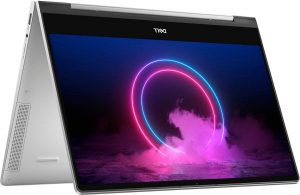
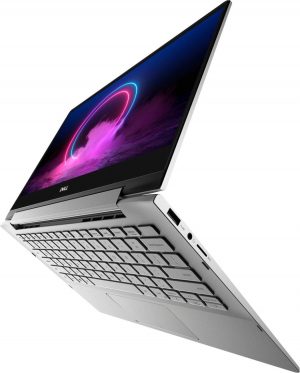
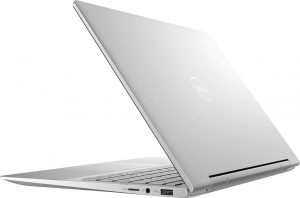
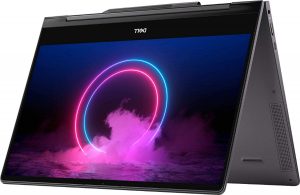
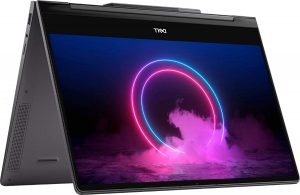
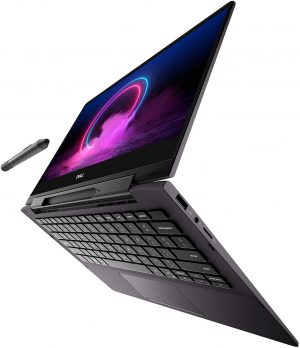
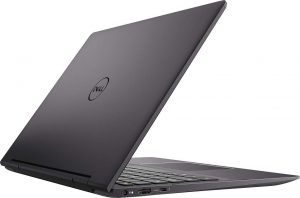







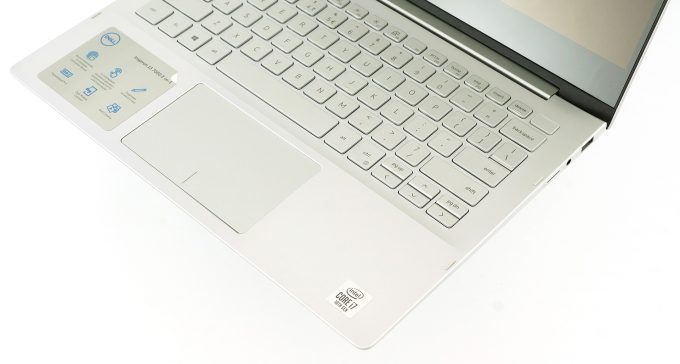
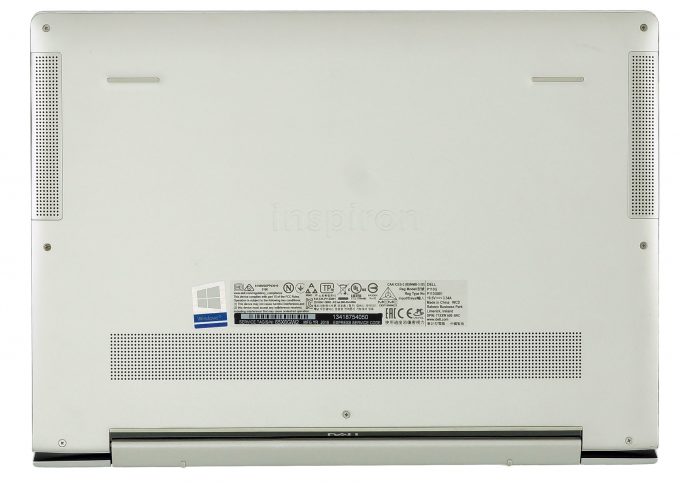



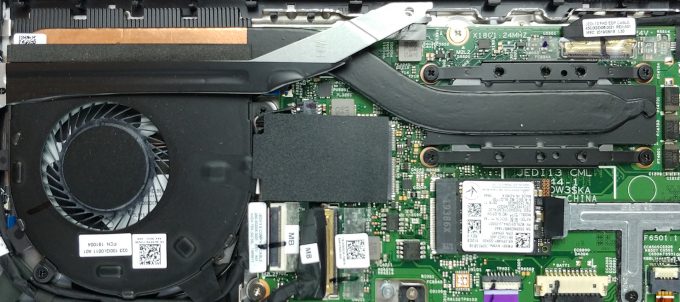

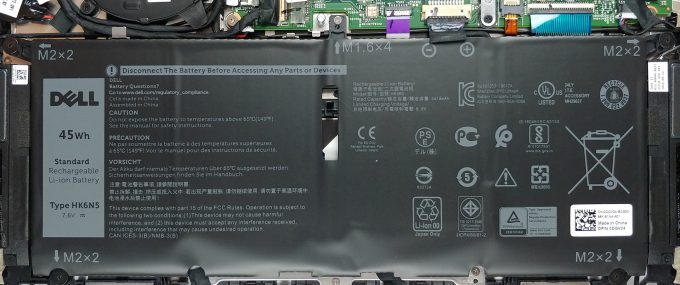

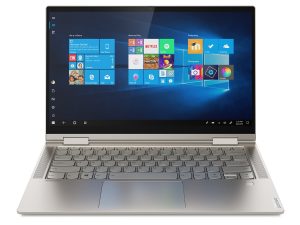
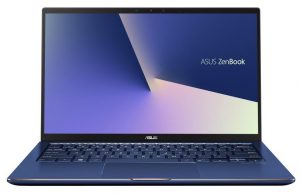








Which applications, specifically, would the 4K screen cause problems with? I don’t plan on gaming, just doing some light drawing/coloring in Fire Alpaca/Sketch Book, some Spotify, Microsoft Suite, and Chrome.
Hey Eli,
With most apps, like Chrome, Spotify and the Microsoft Suite, Windows does a good job of scaling the interface. However, this is not the case with the Adobe Suite for some reason. We don’t know about other professional apps, but with the Adobe Suite, the entire menu, toolbar section and adjustments menu are way too small for a comfortable experience.
Awesome, thanks. I’m not particularly invested in the color of the screen, I just need it to be accurate. Is the regular screen okay for your average Joe? Right now I have the Inspiron 15R (2013) so literally anything is an upgrade from my current situation.
Well, our unit, equipped with this display – (Innolux N133HCE-EPA (CMN1384)), is not the best in terms of color accuracy. However, sometimes, laptop panels are regionally dependent. For more information, you could ask the retailer, and then figure out if the panel is good enough. Now, there is another option, that has a similar price tag – the Lenovo Yoga C740 (14). You can find useful info in our review here: https://laptopmedia.com/review/lenovo-yoga-c740-14-review-strong-body-plus-10th-gen-intel-processors/
WRONG WRONG WRONG, it covers 100%sRGB according to dell. please recheck it and email me : [email protected]
At maximum brightness and best battery life setting, doing light coding tasks and web browsing, can I expect 6+ hours from the Inspiron 13 7391? Can I also charge the laptop through the thunderbolt port instead of the barrel port?
for daily use only should i go with 7391 or 5491, in terms of price to value and upgradibility it seems that inspiron 5491 is better, am i right?
no
52%sRGB is wrong, it covers 100% sRGB, please recheck and inform me